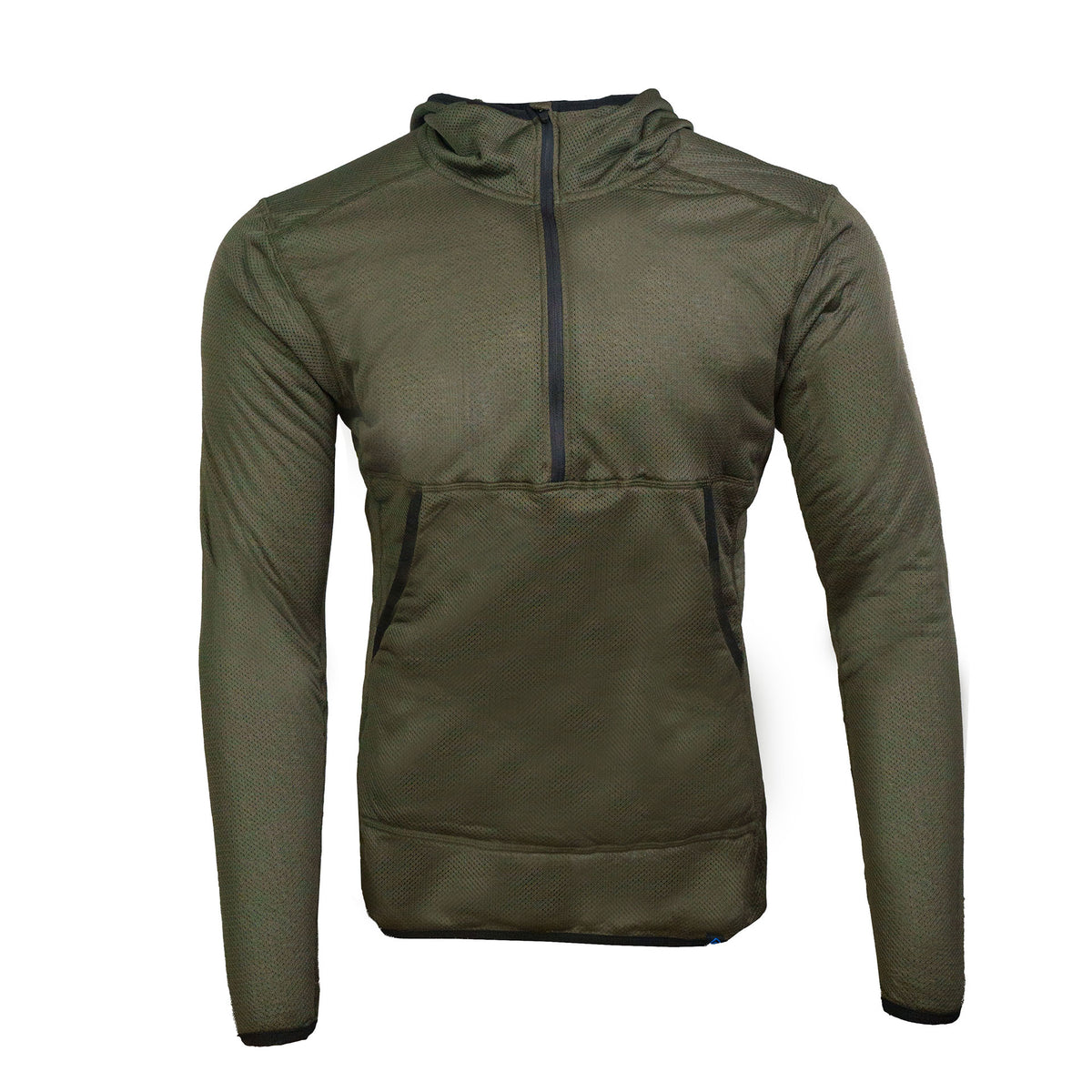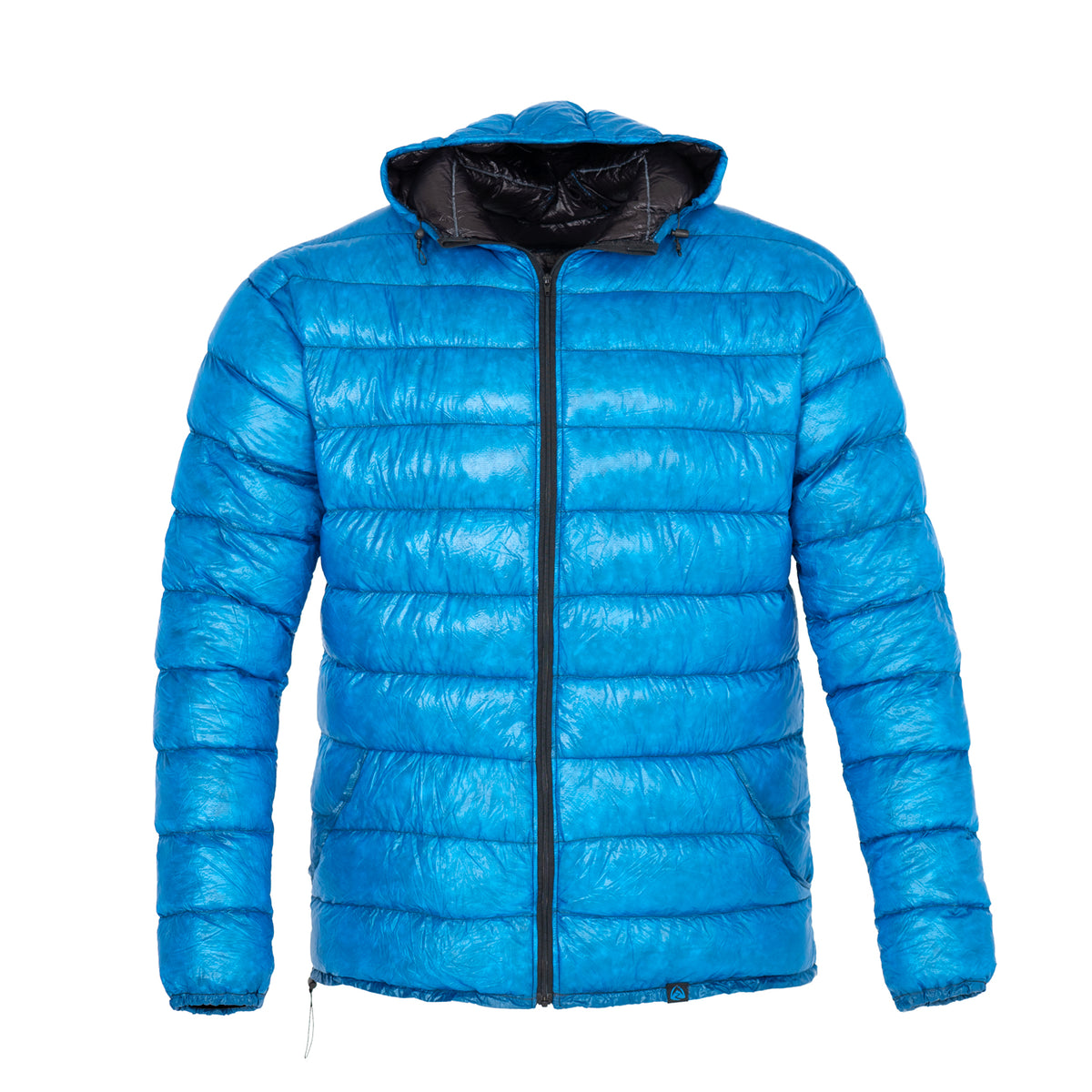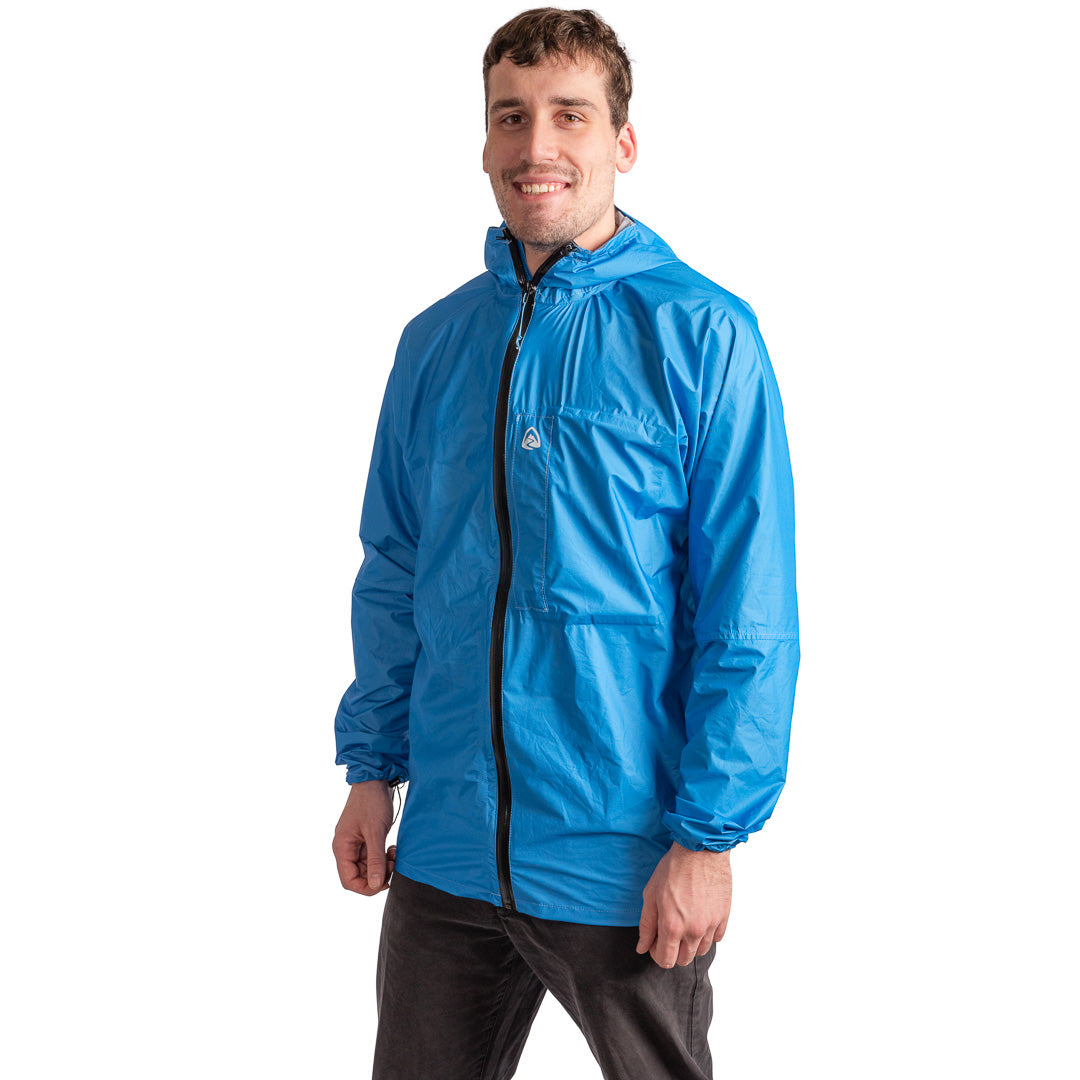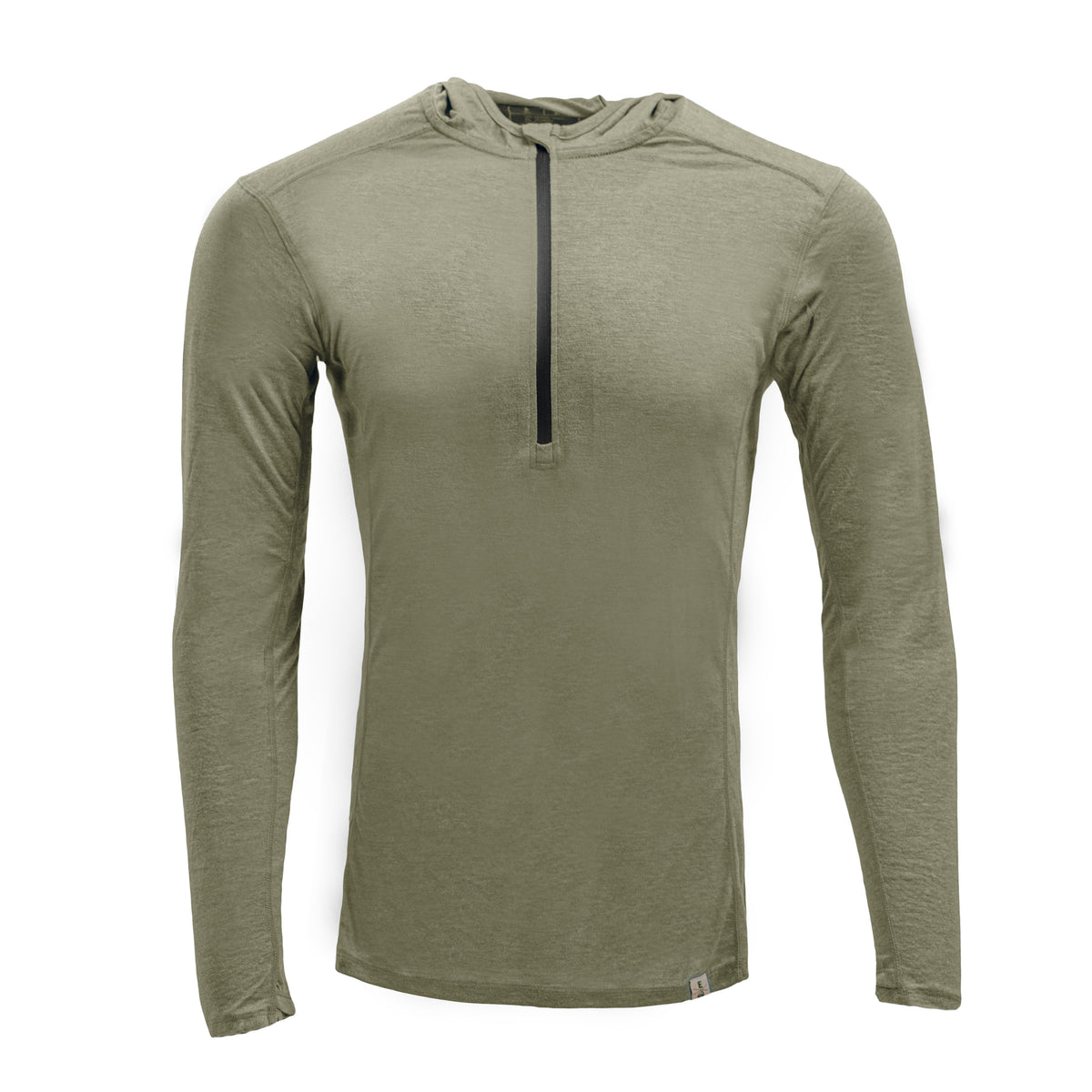When you're planning your next hiking trip or longer thru-hike, you'll want to consider the vital role layering plays in your outdoor clothing for comfort and safety. You've probably heard the adage "there's no such thing as bad weather, only inappropriate clothing," and it's especially true for backcountry living.
The right combination of layers can make the difference between an enjoyable trek and a miserable slog. But how many layers do you really need? The answer isn't as simple as you might think, and it hinges on several factors that could greatly impact your hiking experience. Let's explore the layering system that can keep you comfortable in various conditions.
How to Layer for Hiking Bare Essentials
- The standard three-layer system for hiking includes a base layer, mid layer, and outer layer.
- Cold climates may require a four-layer system with an extra insulating layer for added warmth.
- Warm climates can utilize a two-layer system for flexibility and comfort during hikes.
- Layer adjustments allow hikers to adapt to changing temperatures and activity levels during their trek.
- The number of layers can vary based on climate, personal preference, and the specific hiking conditions encountered.
The Hiker's Clothing Trinity

Mastery of the three-layer system is essential for any hiker looking to stay comfortable in various weather conditions. As you begin your outdoor adventures, you'll discover the power of this ingenious approach to dressing for the trail.
Next comes the mid layer, your personal cocoon of warmth, hugging your body and trapping heat even as the temperature drops. Finally, you don your outer layer, a shield against nature's fury, protecting you from howling winds and driving rain.
This trio of layers works in perfect harmony, allowing you to adapt to the ever-changing conditions of the great outdoors. As you climb steep ridges, traverse rocky paths, and ford icy streams, you'll appreciate the flexibility this system provides.
With each step, you'll feel the synergy of your carefully chosen layers, working together to keep you at the perfect temperature. The three-layer system isn't just clothing; it's your key to revealing nature's wonders, no matter the weather.
Your Second Skin: Mastering Moisture
Think about peeling off your backpack after a grueling ascent, only to find your shirt soaked with sweat. That's where the significant role of base layers comes into play.
These unsung heroes of hiking gear are your first line of defense against moisture, working tirelessly to keep you dry and comfortable as you conquer challenging trails.
When it comes to moisture management, your choice of base layer can make or break your hiking experience.
Synthetic fibers and Merino wool reign supreme here, wicking away sweat from your skin with impressive efficiency. As you stride through misty forests or scale sun-baked ridges, these high-performance materials keep you feeling fresh and focused on the breathtaking views ahead.
Choose your base layer wisely, taking into account:
- The climate you'll be hiking in
- The intensity of your planned activities
- Your personal comfort preferences
- The weight category that suits your needs
The Warmth Trap: Insulation Secrets

As you venture into the wilderness, your mid layer becomes your fortress against the cold, offering essential insulation to keep you warm and comfortable.
You'll find a range of materials to choose from, each with unique properties that cater to different conditions and preferences.
With the right mid layer, you'll have the flexibility to adapt to changing temperatures, ensuring you're always ready for whatever nature throws your way.
Materials for Warmth

When it comes to hiking, your mid layer is essential for keeping you warm and comfortable. This insulating layer provides the vital barrier between your base layer and outer shell, trapping precious body heat to keep you cozy in chilly conditions. As you venture into the wilderness, you'll want to choose materials that offer the ideal balance of warmth and versatility.
- Fleece, a tried-and-true favorite among hikers, offers exceptional breathability and retains heat even when damp.
- For dry, frigid environments, down insulation reigns supreme with its unparalleled warmth-to-weight ratio.
- Synthetic materials, like Primaloft, have transformed mid layer options, mimicking down's properties while maintaining warmth in wet conditions.
As you navigate unpredictable weather, these versatile fibers keep you prepared for anything Mother Nature throws your way.
Consider these factors when choosing your mid layer:
- Your hiking environment and typical weather conditions
- The level of activity and exertion throughout your hikes
- Your personal temperature preferences
- The ability to layer multiple mid layers for ideal temperature regulation
Layering Flexibility Options

Now that you understand the significance of mid layer materials, let's explore how to maximize your layering flexibility. Your layering system is your shield against nature's unpredictable moods, and the mid layer is your secret weapon.
As you trek through ever-changing terrains, your body temperature fluctuates like a rollercoaster. This is where the magic of multiple mid layers comes into play. By donning two or more insulating layers, you're creating a versatile defense that adapts to your needs.
Feeling too warm? Peel off a layer. Chilly breeze picking up? Add one back on. It's like having a personal thermostat at your fingertips.
But keep in mind, fit is vital. Your mid layers should hug your body without restricting movement, allowing you to scramble over boulders or reach for that perfect hiking selfie with ease.
As you conquer challenging trails, you'll appreciate the breathability of fleece or the warmth of synthetic insulation, keeping you dry and cozy.
With the right layering strategy, you're ready to face any adventure that comes your way.
Moisture Management Properties

One of the most vital aspects of your mid layer is its ability to manage moisture. As you trek through challenging terrains, your body works overtime, generating heat and sweat. Your insulating layer must perform a delicate balancing act, trapping warmth in while allowing moisture out. This significant moisture management property keeps you dry and comfortable, even throughout intense physical exertion.
When selecting your mid layer, take into account these breathability factors:
- Material composition: Fleece and synthetic insulations excel at wicking moisture
- Fabric weight: Lighter fabrics often provide better breathability
- Ventilation features: Look for strategically placed zippers or mesh panels
- Fit: A snug but not tight fit promotes ideal moisture transfer
The right mid layer becomes your secret weapon against the elements, adapting to your body's changing needs.
As you push yourself to new heights, your insulating layer works tirelessly, regulating your temperature and keeping you focused on the breathtaking views ahead.
With each step, you'll feel the difference a high-performance mid layer makes, allowing you to conquer peaks and traverse valleys with unwavering comfort and confidence.
Nature's Shield: Battling the Elements

Your outer layer serves as your first line of defense against the elements during a hike. As you venture into the wild, this vital shield stands between you and nature's unpredictable moods.
Picture yourself atop a windswept ridge, rain lashing at your face, yet you remain dry and comfortable thanks to your trusty waterproof jacket. This outer layer, crafted from high-tech materials like Gore-Tex or eVent, repels moisture while allowing your skin to breathe, keeping you balanced in the face of challenging weather.
In cold, dry conditions, a lightweight wind shell might suffice, but when the skies open up, you'll be grateful for a fully waterproof/breathable jacket.
As you navigate rugged trails, your outer layer takes a beating, so durability is key.
Features like adjustable hoods shield your face from driving rain, while cuffs seal out icy gusts. Ventilation options let you manage your temperature as you power up steep inclines, ensuring you're always ready for whatever Mother Nature throws your way.
Adapting Layers for Different Climates

Adapting your layers to different climates is like having a chameleon's ability to change colors. As you venture into diverse environments, your clothing system must transform to meet the challenges of each terrain.
For rainy adventures, a three-layer system becomes your armor against the elements. Imagine striding through misty forests, protected by a lightweight base, breathable insulation, and a waterproof outer layer that repels even the most persistent downpours.
In warm climates, strip down to a two-layer system, reveling in the freedom of movement as you tackle sun-drenched trails. Your versatile layering system adapts to variable weather, allowing you to:
- Shed layers as you ascend steep inclines, your heart pounding with exertion
- Add insulation when cool breezes whisper through mountain passes
- Zip up your waterproof shell as storm clouds gather on the horizon
- Peel off layers to bask in the warmth of a sudden sun break










